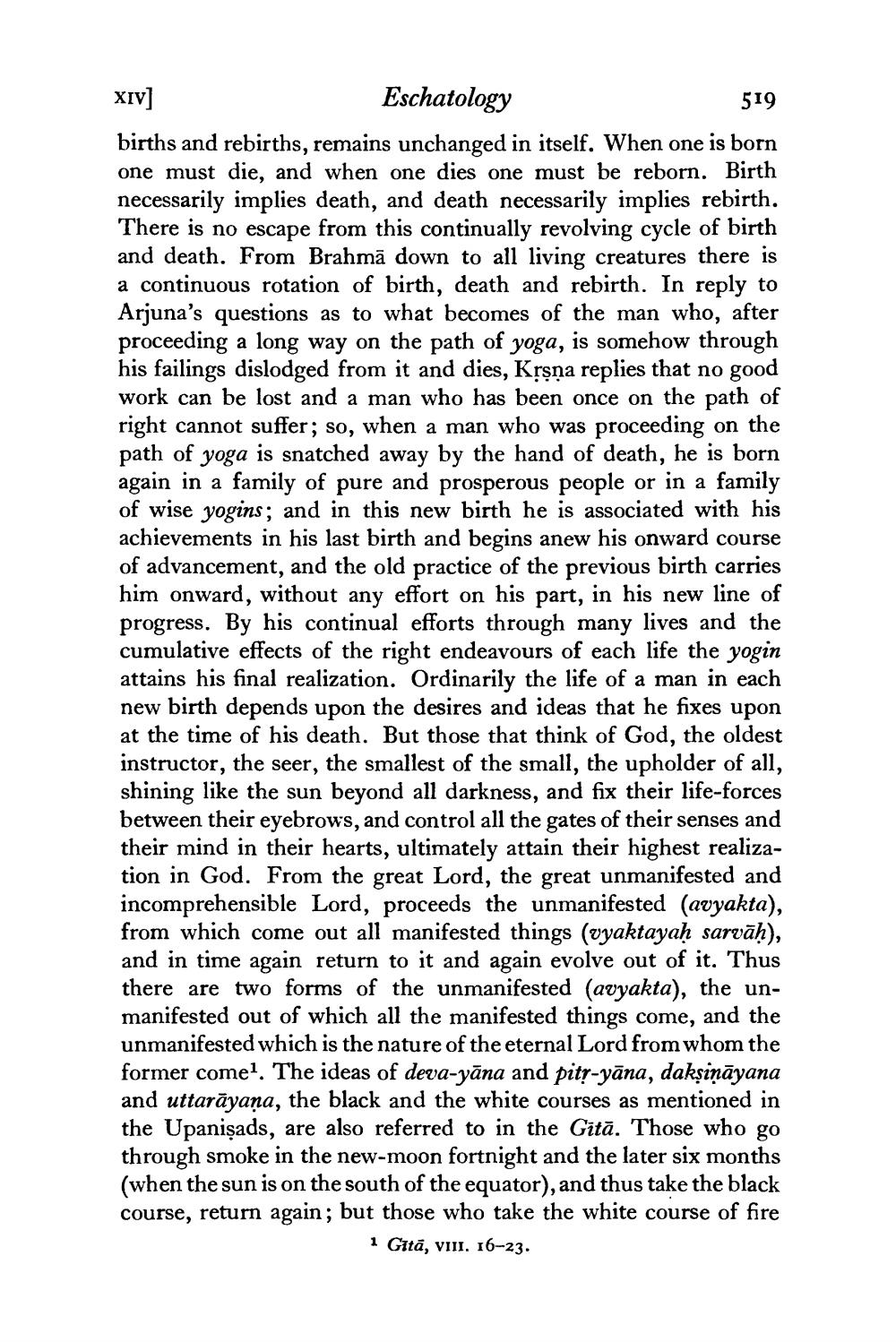________________
XIV]
Eschatology
519
births and rebirths, remains unchanged in itself. When one is born one must die, and when one dies one must be reborn. Birth necessarily implies death, and death necessarily implies rebirth. There is no escape from this continually revolving cycle of birth and death. From Brahmã down to all living creatures there is a continuous rotation of birth, death and rebirth. In reply to Arjuna's questions as to what becomes of the man who, after proceeding a long way on the path of yoga, is somehow through his failings dislodged from it and dies, Kṛṣṇa replies that no good work can be lost and a man who has been once on the path of right cannot suffer; so, when a man who was proceeding on the path of yoga is snatched away by the hand of death, he is born again in a family of pure and prosperous people or in a family of wise yogins; and in this new birth he is associated with his achievements in his last birth and begins anew his onward course of advancement, and the old practice of the previous birth carries him onward, without any effort on his part, in his new line of progress. By his continual efforts through many lives and the cumulative effects of the right endeavours of each life the yogin attains his final realization. Ordinarily the life of a man in each new birth depends upon the desires and ideas that he fixes upon at the time of his death. But those that think of God, the oldest instructor, the seer, the smallest of the small, the upholder of all, shining like the sun beyond all darkness, and fix their life-forces between their eyebrows, and control all the gates of their senses and their mind in their hearts, ultimately attain their highest realization in God. From the great Lord, the great unmanifested and incomprehensible Lord, proceeds the unmanifested (avyakta), from which come out all manifested things (vyaktayaḥ sarvāḥ), and in time again return to it and again evolve out of it. Thus there are two forms of the unmanifested (avyakta), the unmanifested out of which all the manifested things come, and the unmanifested which is the nature of the eternal Lord from whom the former come1. The ideas of deva-yāna and pitṛ-yāna, dakṣiṇāyana and uttarāyaṇa, the black and the white courses as mentioned in the Upanisads, are also referred to in the Gita. Those who go through smoke in the new-moon fortnight and the later six months (when the sun is on the south of the equator), and thus take the black course, return again; but those who take the white course of fire
1 Gītā, VIII. 16-23.




